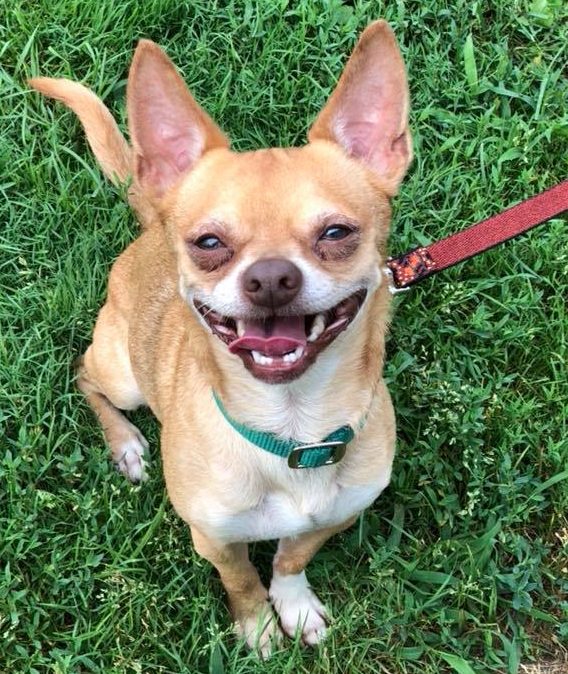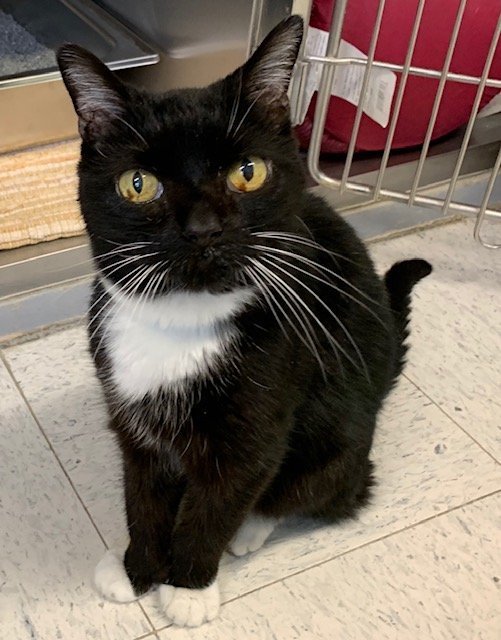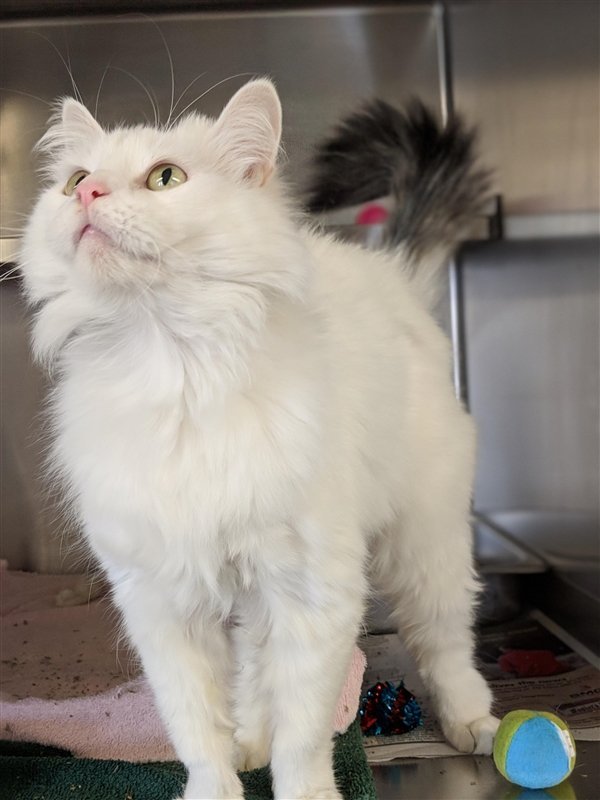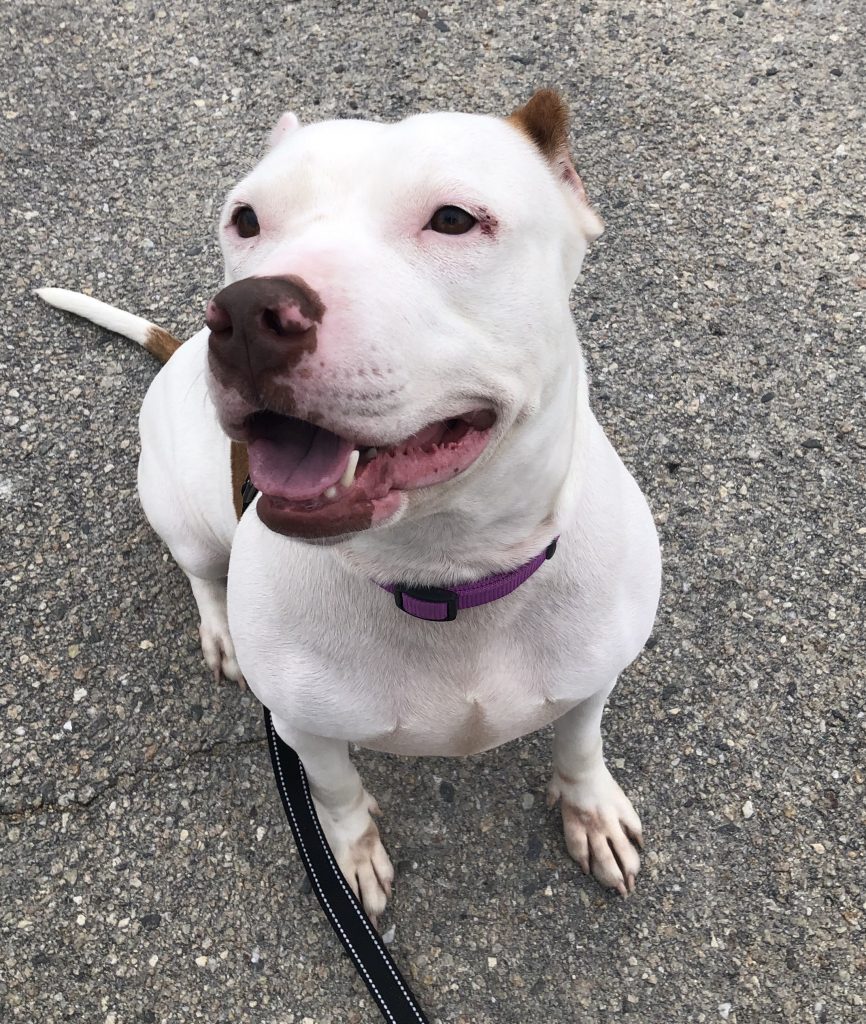
Positive reinforcement training has become a popular concept in recent years as the animal care community moves away from more traditional, punishment and dominance-based training methods. But what exactly is positive reinforcement training? In this post, we’ll cover the basics of positive reinforcement and why it’s a useful tool for pet training!
Defining “positive reinforcement”
The term “positive reinforcement” can be broken down into two parts. “Reinforcement” is defined as establishing a behavior pattern by causing the occurrence of a desired behavior to increase. In this case, “positive” is defined as the addition of something. So, “positive reinforcement” is the system of adding something (treats, attention, playtime) to encourage the frequency of a desired behavior to go up.
How to use positive reinforcement in training
Timing
When training your pet using positive reinforcement, timing is everything! It is important to reward your pet immediately after the desired action is performed, so they can associate positivity with the correct action. For example, when teaching your dog to lay down on command, you must give them a treat as soon as they lay down, not after they pop back upright. Otherwise, your dog could start to associate sitting up with a reward and the “lay down” command.
Simplicity

Simplicity is key in nearly all forms of pet training. Quick, clear commands that are easy to understand will set your pet up for success. When teaching your dog (or cat!) to play fetch, don’t say “go fetch” or “go get the ball.” Instead, just say “fetch!” Your pet will associate the desired action with the command much more quickly if it is short. When you add too many extra words to a command, your pet won’t know which one they’re supposed to listen to!
Consistency
It’s very important to be consistent in your pet’s training. Again, this is true for almost all training methods. Not only is it essential for you to consistently use the same command for a desired action, but also ensure that family members are using the same command, too. Families should be on the same page about rules regarding pets, as inconsistency in the enforcement of rules can be wildly confusing. For example, if you’re training your pet to stay off the couch, it will be very confusing if your spouse invites them up when you’re not around. To effectively reinforce a desired behavior in your pet, rules, commands, and reactions must always stay the same.
Rewards

When engaging in positive reinforcement training, you must select rewards that your pet enjoys, otherwise they won’t work for them! This may take some trial and error, but the process will help you understand what your pet enjoys most!
The most popular reward for positive reinforcement training is food, as most pets love food and it’s easy to present to your pet quickly. Verbal praise, physical affection, and engaging in play are also ways you can reward your pet during training. However, edible treats tend to be the most motivating for pets during training sessions, especially in the beginning stages.
It’s important to provide a variety of treats in a range of values. Save high-value treats (like your dog’s favorite stinky, meaty jerky) for new or more difficult commands and use lower-value treats (like pieces of their regular food) for easier tasks, or to reinforce commands your pet has already learned. The kinds of rewards a pet values most will vary, so make sure you figure out what kinds of treats your pet is willing to work for, and how hard they’re willing to work for them!
You won’t always have to use food or other treats when giving your pets commands, but it is important to use them often when training. Once a behavior is established, you can occasionally give rewards to continue the reinforcement of good behavior, but your praise and acknowledgement will also become the reward!
Patience
All pet training takes time, positive reinforcement included. Your pet may learn some commands and behaviors faster than others, but no matter how long it takes, it’s important to be patient throughout the training process. Positive reinforcement is about building lifelong behaviors, and your pet won’t learn overnight! It may be a slow process, but taking your time and doing it right is the best way to have a successful outcome with your pet’s training

Bad behaviors
One of the major aspects of positive reinforcement training is that not only do you reward your pet for doing something good, you also ignore them when they’re doing something bad. It’s tough, we know! However, many experts agree that acknowledging your pet’s bad behavior, even in a negative manner, is counterproductive to training. With certain undesirable behaviors, your pet may be trying to get your attention, so you give them what they’re looking for just by reacting.
It’s also essential to only reward your pet when they’ve done something good, not when they’ve stopped doing something bad. By rewarding your pet for stopping an undesirable action, they can associate the bad behavior with the reward. Instead, only reward them when they refrain from the bad behavior altogether.
Just because you ignore some of your pet’s undesirable behaviors, doesn’t mean that you can’t ever say “no” to them. You can still embrace the positive reinforcement training method, while also correcting your pet when they are misbehaving. If your pet needs to be corrected, then you should correct them, just be sure to keep it calm, quick, and stern. However, it is also important that these corrections occur separate from positive reinforcement sessions. Correcting your pet during a time of positive reinforcement training can be counterproductive to your goal.
Benefits of positive reinforcement
Positive reinforcement training methods are more enjoyable for both you and your pets than other kinds of training that involve punishment or dominance behaviors. Your pet will associate rewards and positivity with both desired behaviors and you! Training your pet with positive reinforcement can be more fun and less stressful than other methods. When you reward your pet for doing good things, they will want to continue doing the things that please you!

When used correctly, positive reinforcement has very few, if any, negative outcomes. Studies show that pets are more likely to associate negative reactions of other training methods (i.e. punishment) with you, and not the bad behavior you’re trying to correct. Punishment or dominance training methods can also cause your pet to fear or even lash out at you, due to anxiety or confusion. When associating training with rewards and positivity, rather than punishment and negativity, your pet is much more likely to learn desired behaviors, while also associating you with positive events!
Positive reinforcement is a great tool when training pets, and can result in successful outcomes with less stress than other training methods. All pets have the capacity and ability to learn, regardless of species, breed, or age. However, it’s important to keep in mind that all pets are different, and no single training method will work perfectly for all of them. Try using positive reinforcement when training your pet, help them learn in a supportive environment, and have some fun along the way!
